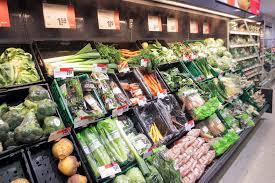Up to 70 chemicals regularly find their way into the environment, many of which are not biodegradable, having a detrimental effect on the environment. Eco-friendly living is about purposely reducing the impact you have on the planet, from conserving energy to preventing water, air and noise pollution. You can make more eco-friendly decisions to do your part, from reducing the amount of waste you produce to having an environmentally-friendly swimming pool and pool house.
The Zero Waste Movement
Living a zero-waste lifestyle is about not creating waste in the first place, rather than focusing on how to dispose of the waste in the most environmentally-friendly way. Plastics can only be recycled so many times and energy is needed for recycling. There’s also no guarantee that what is put in the trash actually gets recycled. Ideally, everything should be reusable, if not compostable, avoiding anything going into the trash, thus landfills and potentially the oceans. The zero waste movement is about the bigger picture, rather than an individual choosing to live a certain way. It’s about taking responsibility for the planet and the way humans use it, by living sustainably and working towards reducing climate change.
Ways To Live Zero Waste
Living zero waste is easier said than done in a disposable world, but it is possible. Start off with simple changes, such as making as much as your own food as possible to reduce the amount of packaging brought into your home. Buy food from refill shops where you take your own containers, such pulses, rice and pasta. Many coffee shops will happily fill up your reusable coffee cup instead of giving you one of their disposable ones. Make switches to fresh, unpackaged bread and loose fruits and vegetables, easily bought from local markets where you can take your own bags.
You can also make your own cleaning products, switch to items made from bamboo that will biodegrade, such as cotton swabs and toothbrushes. There are a ton of disposal items we use that could be replaced with washable to reusable items, including sanitary products, diapers, tissues, paper towels, and more. The average women will use 11,000 disposable tampons in their lifetime, so switching to menstrual cups or washable sanitary towels can drastically reduce waste.
Eco-Friendly Back Garden
1 in 3 American households grow some of their own food, making the garden a great place to start on your journey to embracing eco-friendly living. Growing your own food at home will mean there’s less demand for shop-bought groceries that have a high carbon footprint from the miles they’ve traveled and the single-use plastic packaging they come wrapped in.
If you love your outdoor living, and use your backyard as an entertainment area, there's ways to go eco-friendly there, too. For instance, there are green swimming pools, if you understand how and make the effort to maintain it. Covering it when it’s not being used will decrease how much water evaporates and powering pumps and heaters with solar panels can reduce carbon emissions. Surrounding your pool with lots of plants will act as wind breakers and help the environment too. Be sure to get a pool that isn’t bigger than you need as it will use more water to fill, more energy to maintain and more chemicals to keep it clean.
The same goes for your backyard buildings - whether a pool house or shed, there are things you can request to make them more eco-friendly, including solar panels, a green roof (to grow right on top of your building!), a compost toilet, and more. We've designed several eco-friendly pool houses for clients that have included composting toilets, solar panels, and more.
Tips For Growing Your Own Food
The most eco-friendly food you can grow is the food that you struggle to buy without packaging and that you consume a lot of. Potatoes and onions often come in plastic bags or nets, but are very easy to grow and tend to be a staple part of most peoples diets. Growing foods that you don’t eat often can be wasteful, but you can offer it to other people in the community if you want to try growing new things. If you don’t have a garden to grow your own food, most people have a local allotment that they can use or you can grow potted vegetables and fruits around your home, such as greens, carrots, beans and tomatoes. You could even just grow some herbs on your windowsill if that’s all you have space for. Anything you grow helps to reduce the demand for food that has a high carbon footprint and is wrapped in plastic.
Making Changes Around The Home
Cleaning products are some of the worst items in the home when it comes to eco-friendliness. Most of them are full of chemicals that are harmful to both the environment and people’s health. The chemicals can easily enter the water system when they’re flushed down toilets or washed down sinks. Sewer systems can filter most chemicals out, but there remain some that are ‘disposed’ of into waterways where they subsequently harm wildlife and ecosystems. Of course, it’s not expected for people to stop cleaning their homes, but you can switch to green products that contain only biodegradable chemicals or no chemicals at all. Alternatively, make your own cleaning products which will also remove the plastic packaging involved.
It’s important for everyone to embrace an eco-friendly lifestyle before environmental issues become too big and are irreversible. Humans are using the planet’s resources quicker than what is sustainable, which it can only do for so long. Little changes add up and help but making green decisions in all areas of your life will have the greatest impact.

Facebook Comments Box